Model Comparison
| Phenotype | NZBWF1/J | MRL-Lpr |
|---|---|---|
| Proteinuria | ✓ | ✓ |
| Autoantibodies | ✓ | ✓ |
| Lymphadenopathy | ✓ | ✓ |
| Splenomegaly | +/- | ✓ |
| Glomerulonephritis | ✓ | ✓ |
| Dermatitis/Psoriasis | x | ✓ |
| SLE Genes | ✓ | x |
| Gender Bias | ✓ (F) | ✓ (F) |
| 50% Survival Age | ~45 Weeks | ~25 Weeks |
| Age of Onset | ~30 Weeks | ~10-12 Weeks |
| Available Age Range | 4 to 20 Weeks | 4 to 8 Weeks |
Example Efficacy Study Using MRL-lpr
• 8 week old female MRL-lpr mice (10 mice per group)
• Disease onset assessed by proteinuria levels
• Prophylatic (prior to detection of proteinuria) or therapeutic (after detection of proteinuria) dosing
• Proteinuria measured throughout the study
• Spleen and kidneys collected and weighed at study terminus; kidneys processed for histology
• Anti-dsDNA and total IgG can be assessed by ELISA
Experimental Timelines

Representative Data
(error bars = SEM)
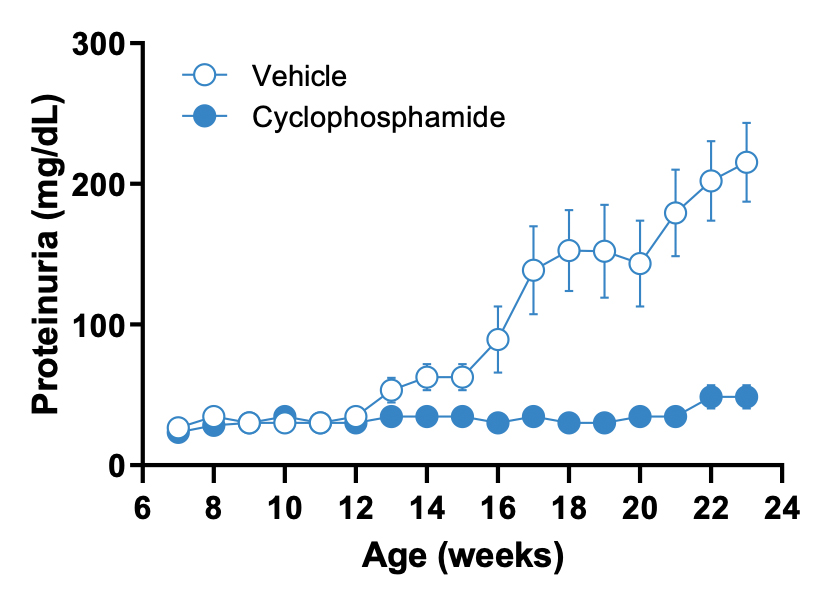
Figure 1. Proteinuria Analysis. Proteinuria begins to increase by 13 weeks of age. Treatment with cyclophosphamide beginning at 8 weeks inhibits the increase in proteinuria in MRL-lpr mice.
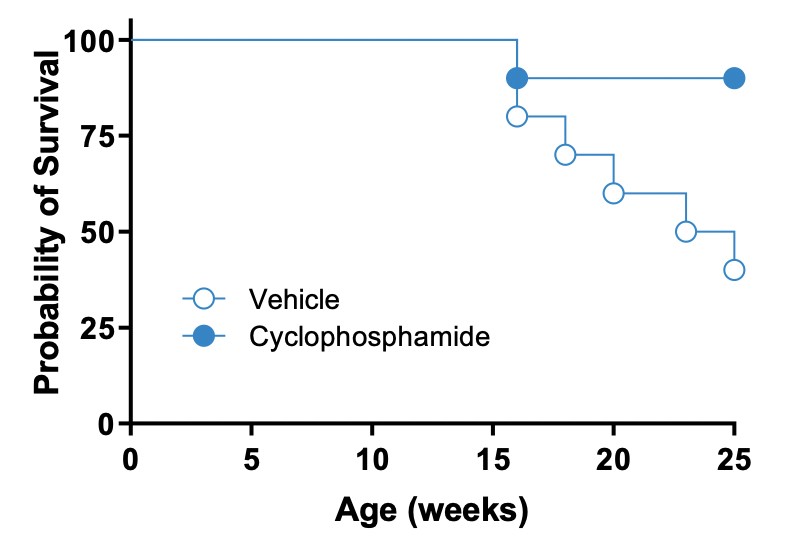
Figure 2: Survival. Cyclophosphamide improves survival in MRL-lpr mice.
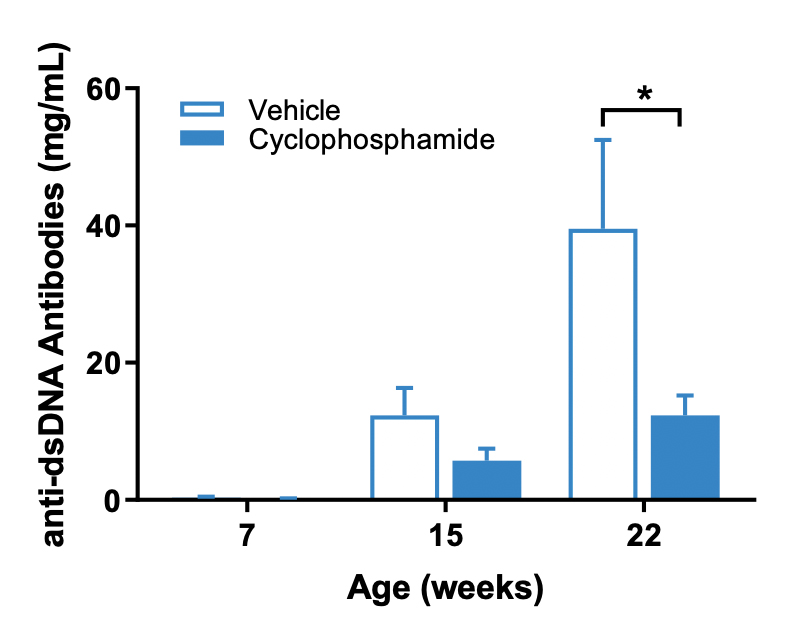
Figure 3. Anti-dsDNA Antibody Concentration in Sera. Serum anti-dsDNA antibody levels can be reduced with cyclophosphamide treatment in MRL-lpr mice. *p<0.05
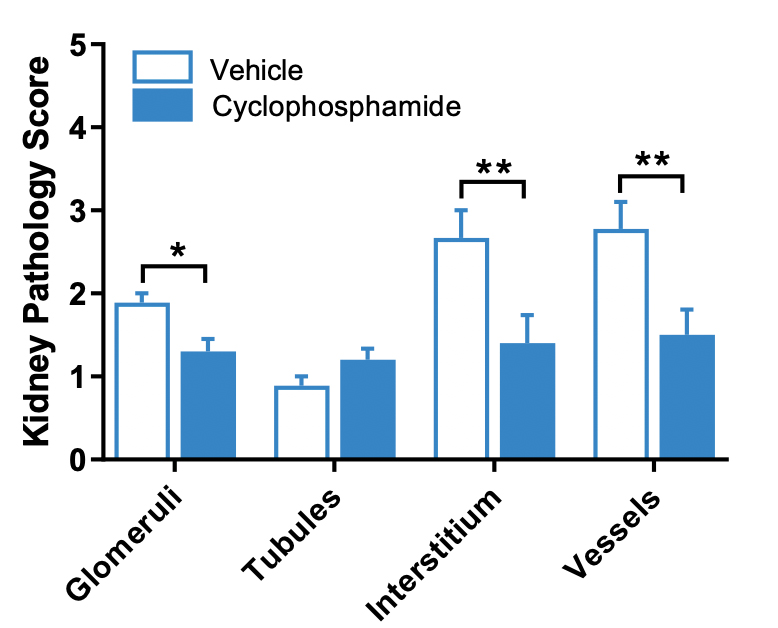
Figure 4: Kidney Pathology Analysis. Histopathology scoring of different regions of the kidney shows improvements following cyclophosphamide treatment in MRL-lpr mice. *p< 0.05, **p< 0.01
Example Efficacy Study Using NZBWF1
- Female NZBWF1/J mice (10 mice per group)
- Disease onset assessed by proteinuria levels
- Prophylactic (prior to detection of proteinuria) or therapeutic (after detection of proteinuria) dosing
- Spleen and kidneys collected and weighed at study terminus, kidneys processed for histology
- Anti-dsDNA and total IgG can be assessed by ELISA
- Immunophenotyping of splenocytes
Experimental Timelines

Representative Data
(error bars = SEM)
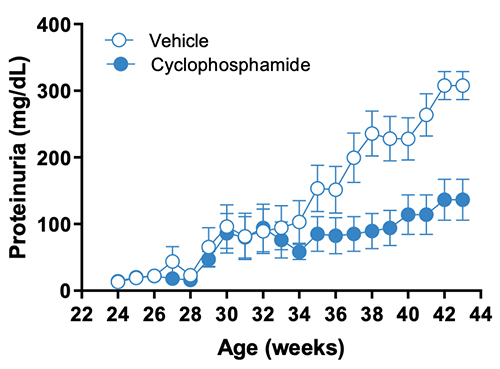
Figure 1: Proteinuria Analysis. Proteinuria begins to increase by 27 weeks of age. Treatment with cyclophosphamide beginning at 26 weeks of age inhibits elevations in proteinuria in NZBWF1/J mice.
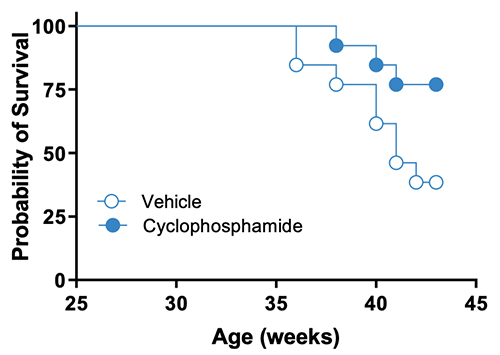
Figure 2: Survival Cyclophosphamide improves survival in NZBWF1 mice.
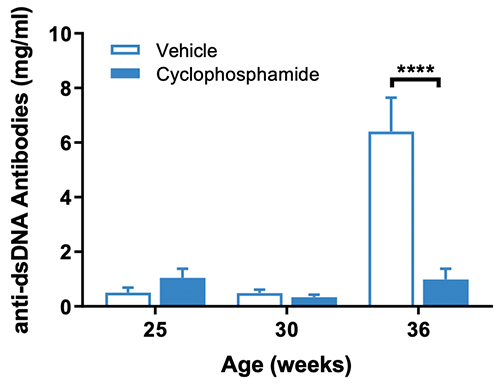
Figure 3. Anti-dsDNA Antibody Concentration in Sera: Serum anti-dsDNA antibody levels can be reduced with cyclophosphamide treatment in NZBWF1 mice. ****p<0.0001
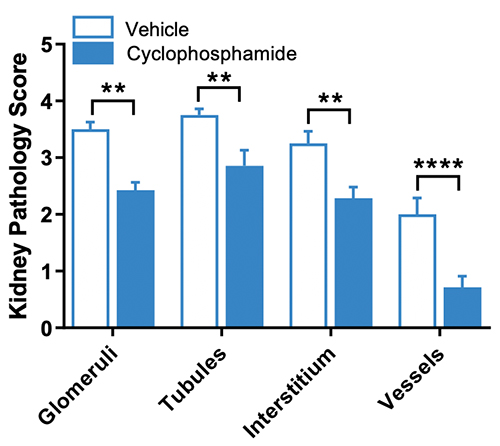
Figure 4. Kidney Pathology Analysis: Histopathology scoring of different regions of the kidney shows improvements following cyclophosphamide treatment in NZBF1/J mice. **p< 0.01, ****p<0.0001

Figure 5: Immunophenotyping Immune cell profiling of splenocytes from NZBWF1/J mice at 36 weeks of age following prophylactic treatment with cyclophosphamide. Reduced effector memory T cells and B cells translates into reduced clinical signs of disease. **p< 0.01, ***p<0.001, ****p<0.0001